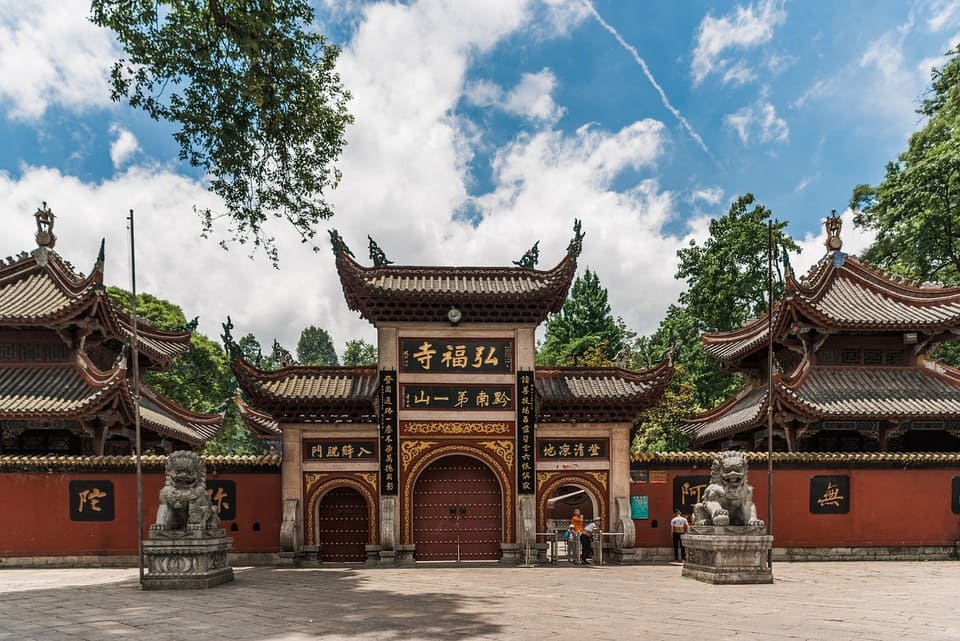
Languages Spoken in China: Culture, Identity, and Communication
China, known for its rich history and cultural diversity, has a complex linguistic landscape. It is home to one of the world's oldest written languages-Mandarin Chinese. Also referred to as Standard Mandarin, this language is the official language of China, spoken widely across the country. Apart from Mandarin, there are numerous languages spoken by ethnic minorities, each with its own cultural value. In this article, we explore language diversity in China, noting the widespread use of Mandarin. We also highlight the role of minority languages in maintaining and enhancing the nation's multiculturalism.
Standard Mandarin- The Official Language of China
Standard Mandarin is the official language of China and is spoken by over a billion people. It is based on the Beijing dialect, which has its roots in the historical city of Beijing, the seat of imperial power during the Ming and Qing Dynasties. Over the centuries, this dialect evolved into a more standardized form, gaining influence among the ruling elite and officials. By the early 20th century, efforts to unify the language and promote communication across China led to the development of Standard Mandarin.
One of the notable features of this language is its tonal nature. Mandarin uses four tones and a neutral tone, each affecting the pronunciation and meaning of words. These tones give the language a distinct rhythm and intonation. Additionally, Standard Mandarin uses simplified Chinese characters (Hanzi) as opposed to the traditional characters seen in ancient texts. The simplification, implemented in the mid-20th century, aimed to enhance literacy rates and facilitate ease of learning for a growing population. This adaptation significantly streamlined the writing system, making it more accessible and comprehensible to a broader segment of the Chinese population.
Major Language Families in China
China's linguistic landscape is highly diverse, belonging to several major language families. The most prominent language families include:
- Sino-Tibetan: This family includes Mandarin, the official language spoken by the majority, as well as various other Chinese dialects such as Cantonese, Hakka, and Shanghainese. Mandarin is spoken nationwide, while Cantonese is primarily used in Guangdong province and Hong Kong, Hakka in several southern provinces, and Shanghainese in the Shanghai metropolitan area.
- Altaic: Represented by languages such as Mongolian, Uighur, Kazakh, and Kyrgyz. These tongues are predominantly spoken in the northern and western regions
- Tai-Kadai: Includes languages such as Zhuang, Bouyei, Dong, and Sui. These are mainly spoken in the southern parts of China.
- Austroasiatic: Comprises Vietnamese, Khmer, and Wa, and are found primarily in southern China.
- Turkic: Includes Uyghur, spoken by the Uighur people in Xinjiang, and Kazakh, spoken mainly in Xinjiang near Kazakhstan.
The Most Commonly Spoken Languages in China by Percentage
As one of the most linguistically diverse countries in the world, China features a wide array of languages spoken by its vast population. While Standard Mandarin serves as the official language and is the most widely spoken, many other significant languages are used by various ethnic groups. Here are the most spoken languages in China, along with their percentages to illustrate their prevalence in the nation's linguistic landscape:
- Mandarin: The predominant language, spoken by approximately 71.5% of the population. It is the most widely spoken native language globally and includes several regional dialects, such as Northeastern Mandarin, Jilu Mandarin, and Southwestern Mandarin, each with unique pronunciation and vocabulary characteristics.
- Wu: Spoken by about 8.5% of the population, primarily in the Shanghai region and Zhejiang province. Wu includes several dialects, such as Shanghainese, which is known for its distinctive pronunciation and vocabulary.
- Yue (Cantonese): Spoken by roughly 5% of the population, mainly in the southern regions, including Guangdong province and Hong Kong. Cantonese is notable for its six to nine tones, which are essential for meaning differentiation.
- Xiang: Spoken by about 4.8% of the population, primarily in Hunan province. Xiang has two major varieties, New Xiang and Old Xiang, with significant differences in pronunciation and vocabulary
- Min: Includes languages such as Hokkien and Teochew, spoken by about 4.1% of the population. Min languages are prevalent in Fujian province and Taiwan, characterized by their lack of mutual intelligibility with other Chinese dialects.in languages have preserved many archaic features of Chinese, and their phonology and lexicon can vary greatly even within the Min language group.
China is incredibly diverse in languages, with Mandarin Chinese standing out as the most widely spoken dialect globally. Mandarin, rooted in the Beijing dialect, serves as China's official language. Alongside Mandarin, significant dialects include Wu, Min, Yue (Cantonese), Xiang, Hakka, and Jin, each with its own sub-dialects. These dialect groups vary in mutual intelligibility, unlike English accents, making Chinese dialects significantly distinct and affecting communication. Studying local dialects not only deepens our understanding of regional life but also offers valuable insights into the cultural nuances present across China's varied languages.







